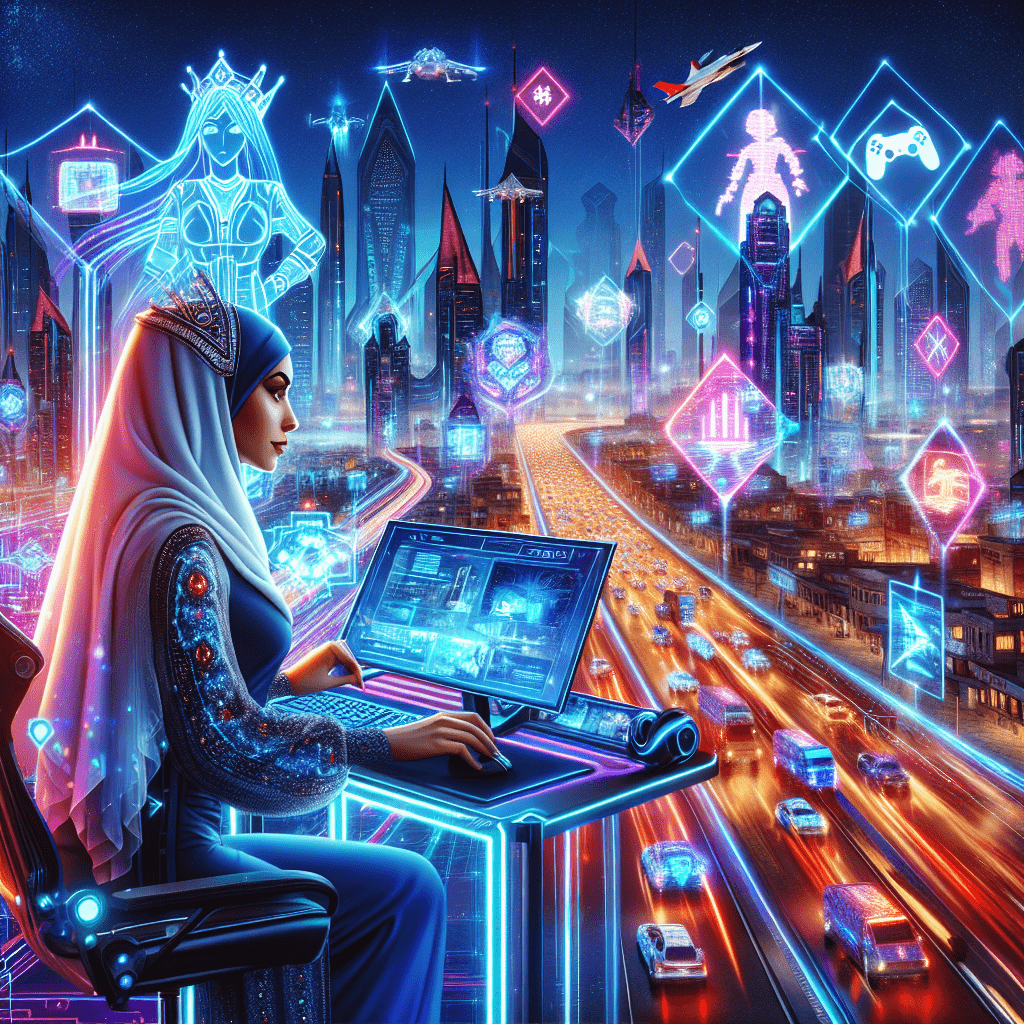Your cart is currently empty!

Leveling Up the Gaming Conference Experience
Introduction
Gaming conferences are the epicenters of excitement for enthusiasts and industry professionals alike. They’re where the latest games are unveiled, where the future of gaming is debated, and where fans and creators meet face-to-face. But beyond the big announcements and flashy demos, these conferences are about creating an unforgettable experience for those who attend. Crafting these memorable moments requires a blend of understanding the audience, leveraging technology, and ensuring comfort and accessibility. Let’s power up and explore the key strategies that can transform a good gaming conference into a great one.
Understanding the Audience
Who’s grabbing their controllers and heading to these gaming gatherings? Attendees range from casual fans to hardcore gamers, indie developers to AAA studios, and content creators to industry analysts. Understanding the demographics and psychographics of these diverse groups is crucial. They each come with their own set of expectations and needs, from wanting to try out the latest games to networking with other professionals.
By tailoring experiences to cater to these different personas, conference organizers can ensure that every attendee leaves with their own highlight reel of memories. Whether it’s a developer looking for their next career move or a gamer eager to meet their online teammates in person, personalization is key.
| Attendee Type | Expectations |
|---|---|
| Casual Gamers | Fun, interactive experiences |
| Hardcore Gamers | In-depth game previews and developer Q&As |
| Industry Professionals | Networking opportunities and industry insights |
| Content Creators | Exclusive content and collaboration opportunities |
Innovative Use of Technology
What’s a gaming conference without a bit of tech wizardry? Incorporating the latest gaming technology into exhibits not only showcases what’s new but also provides an immersive experience for attendees. Imagine stepping into a booth and being greeted by a life-sized hologram of your favorite game character, or using VR headsets to explore a game world before its release.
Mobile apps are becoming indispensable for interactive conference agendas and networking. They can help attendees plan their day, connect with others, and even participate in scavenger hunts or AR experiences throughout the venue. And let’s not forget the power of VR and AR to turn presentations into jaw-dropping, interactive showcases that leave attendees talking long after the conference is over.
| Technology | Use Case |
|---|---|
| Mobile Apps | Scheduling and networking |
| Virtual Reality | Immersive game demos |
| Augmented Reality | Interactive exhibits and games |
| Holograms | Character meet-and-greets |
Interactive Panels and Workshops
Nothing beats the thrill of live discussion and learning from the best in the biz. Designing panels that not only inform but also engage the audience is an art form. It’s about finding the right mix of personalities, from visionary developers to charismatic streamers, and covering topics that resonate with the audience. Workshops, on the other hand, offer a more hands-on approach to learning, whether it’s about game design, coding, or content creation.
Q&A sessions are the cherry on top, providing a platform for attendees to dive deeper into discussions and interact directly with panelists. It’s these moments of connection and insight that can inspire the next generation of gaming greatness.
| Panel/Workshop Type | Description |
|---|---|
| Developer Panels | Insights into game creation and industry trends |
| Content Creation Workshops | Tips and tricks for aspiring YouTubers and streamers |
| Game Design Workshops | Hands-on experience with game design tools and concepts |
| Q&A Sessions | Opportunities for attendees to ask questions and engage with speakers |
Networking Opportunities
Conferences are the multiplayer arenas of the professional world, where connections are made and alliances are formed. Structuring social events, like mixers and parties, can encourage attendees to mingle and share ideas. It’s not just about handing out business cards; it’s about creating a space where meaningful conversations can happen over a shared love for gaming.
Providing platforms for showcasing work, like indie game alleys or portfolio reviews, can be a game-changer for up-and-coming talent. And in today’s connected world, social media plays a pivotal role in networking, allowing the conversation to continue long after the conference doors close.
| Networking Opportunity | Purpose |
|---|---|
| Social Mixers | Casual interaction and relationship building |
| Portfolio Reviews | Feedback and exposure for new artists and designers |
| Social Media Groups | Ongoing discussions and connections post-conference |
| Indie Game Showcases | Spotlight for indie developers to present their games |
Exclusive Content and Previews
One of the biggest draws of gaming conferences is the promise of exclusive content and first looks. Partnering with developers to offer sneak peeks at upcoming titles can create a buzz that resonates throughout the gaming community. Tournaments and contests with exclusive rewards not only add a competitive edge to the event but also give attendees a chance to shine in the spotlight.
Meet-and-greets with influential figures in the gaming industry can be a dream come true for fans. These opportunities for personal interaction with game creators, voice actors, and esports stars add a special touch that can’t be replicated outside the conference walls.
| Exclusive Offering | Benefit |
|---|---|
| Game Previews | Early access to upcoming games |
| Tournaments | Competitive play with prizes |
| Meet-and-Greets | Personal interaction with industry celebrities |
| Contests | Engagement and exclusive rewards |
Attention to Comfort and Accessibility
Ensuring that every attendee can enjoy the conference to the fullest is not just good practice—it’s essential. This means having an accessible venue for people with disabilities, providing amenities like rest areas and a variety of food options, and managing crowds efficiently to avoid long lines and wait times. Comfort can make or break an attendee’s experience.
Mental health is also a priority, with quiet zones and stress-relief activities becoming more common at events. These spaces offer a respite from the sensory overload that can accompany gaming conferences, ensuring that all attendees have a place to recharge.
| Comfort Feature | Purpose |
|---|---|
| Accessible Facilities | Inclusivity for attendees with disabilities |
| Rest Areas | Places to relax and recharge |
| Quiet Zones | Spaces for mental health breaks |
| Variety of Food Options | Catering to different dietary needs and preferences |
Post-Conference Engagement
The end of the conference doesn’t have to mean game over. Following up with attendees through surveys and feedback forms helps organizers understand what worked and what can be leveled up for next time. Offering digital content recaps and highlights keeps the excitement going and allows those who couldn’t attend to share in the experience.
Building a community around the conference for year-round interaction ensures that the connections made don’t fade away. This can be done through forums, social media groups, or even a dedicated app. It’s about keeping the conversation alive and the community engaged until the next epic gathering.
| Engagement Type | Purpose |
|---|---|
| Surveys and Feedback | Gather insights for future improvements |
| Digital Recaps | Share conference highlights with a wider audience |
| Online Communities | Maintain engagement and build anticipation for the next event |
| Year-Round Interaction | Keep the community active and connected |
Conclusion
In the fast-paced world of gaming, conferences are more than just events—they’re experiences that can inspire, connect, and entertain. By focusing on the audience, embracing technology, and ensuring comfort and accessibility, organizers can create an environment where memories are made and the community thrives. The strategies discussed here are just the starting point for what can be an ever-evolving and leveling-up conference experience.
As the gaming industry continues to grow, the importance of innovation in event planning cannot be overstated. Investing in the attendee experience pays off in the long run, fostering a loyal community that’s eager to return year after year. So, let’s keep pushing the boundaries and crafting gaming conferences that are as unforgettable as the worlds they celebrate.
FAQ
- What makes a gaming conference experience memorable?
- Memorable gaming conference experiences are created through a combination of understanding the audience, incorporating innovative technology, offering exclusive content, and ensuring comfort and accessibility. Engaging panels, networking opportunities, and post-conference engagement also play significant roles.
- How can technology enhance a gaming conference?
- Technology can enhance a gaming conference by providing immersive experiences through VR and AR, facilitating networking and scheduling with mobile apps, and creating interactive exhibits that captivate attendees.
- Why is it important to understand the audience at a gaming conference?
- Understanding the audience is crucial because it allows organizers to tailor the conference experience to meet the specific needs and expectations of different attendee types, from casual gamers to industry professionals.
- What are some ways to encourage networking at gaming conferences?
- Networking can be encouraged by organizing social mixers, providing platforms for showcasing work, leveraging social media for continued interaction, and creating spaces where attendees can naturally connect over shared interests.
- How can gaming conferences cater to attendees’ comfort and accessibility?
- Gaming conferences can cater to comfort and accessibility by ensuring the venue is fully accessible, providing amenities like rest areas and a variety of food options, and creating quiet zones for mental health breaks.






